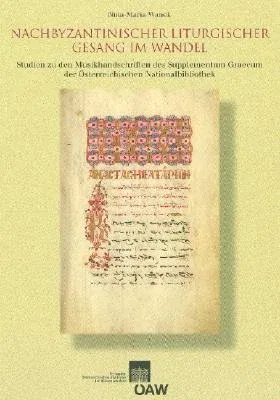Nina M Wanek
(Author)Nachbyzantinischer Liturgischer Gesang Im Wandel: Studien Zu Den Musikhandschriften Des Supplementum Graecum Der Osterreichischen NationalbibliothekPaperback, 14 August 2007

Qty
1
Turbo
Ships in 2 - 3 days
In Stock
Free Delivery
Cash on Delivery
15 Days
Free Returns
Secure Checkout

Part of Series
Veroffentlichungen Zur Byzanzforschung
Part of Series
Denkschriften Der Philosophisch-Historischen Klasse
Part of Series
Veroffentlichungen Der Kommission Fur Byzantinistik
Print Length
378 pages
Language
German
Publisher
Austrian Academy of Sciences Press
Date Published
14 Aug 2007
ISBN-10
3700135432
ISBN-13
9783700135432
Description
Product Details
Author:
Book Format:
Paperback
Country of Origin:
US
Date Published:
14 August 2007
Dimensions:
29.72 x
21.08 x
2.29 cm
Genre:
Medieval (500-1453) Studies
ISBN-10:
3700135432
ISBN-13:
9783700135432
Language:
German
Location:
Vienna
Pages:
378
Publisher:
Series:
Weight:
1179.34 gm